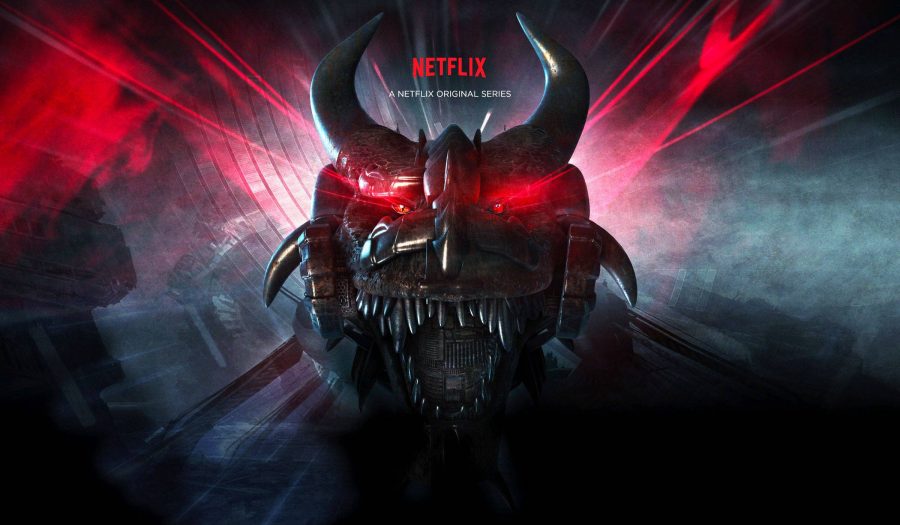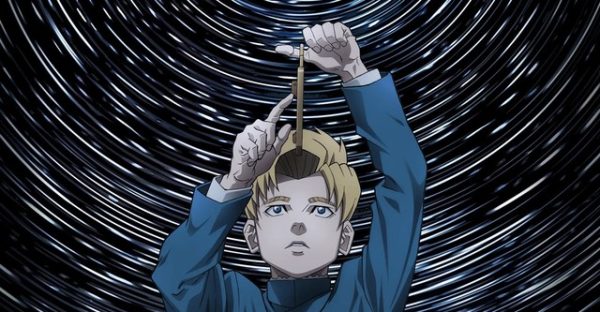Unleash the Beast
Ultimate Beastmaster is Netflix’s first reality competition series
photo by movies.stackexchange.com
A poster promoting Ultimate Beastmaster.
While Netflix is a haven for scripted shows such as Orange is the New Black, Stranger Things and Voltron: Legendary Defender, there is another genre Netflix has failed to tackle until now: the competition reality show.
Ultimate Beastmaster, co-created by David Broome and Sylvester Stallone, is Netflix’s first competitive reality show, and while the concept has been done before, such as in American Ninja Warrior and its Japanese inspiration Sauske, Beastmaster presents the formula in an appealing way that keeps viewers engaged.
Ultimate Beastmaster’s first season consists of 10 hour-long episodes in which contestants from Brazil, Germany, Japan, Mexico, South Korea and the United States attempt to conquer a grueling obstacle course named The Beast. The contestants, 18 from each country, are gradually dwindled down over the course of The Beast’s first three levels until only two remain. The winner of the fourth and final level wins a cash prize, the title of Beastmaster, and the chance to return in the season finale to win more cash and the title Ultimate Beastmaster.
When a contestant completes an obstacle, they receive points which increase along with the levels, and the contestants with the most points advance with their times being used as tiebreakers. These points are also cumulative over the course of the first three levels which provides an extra incentive for contestants to try to go as far as they can on the course.
This opens up the possibility for a concept completely original to Beastmaster, the Point Thruster. These small switches give the contestant extra points, but going for these Point Thrusters comes with a serious risk of falling, so contestants must decide whether to take the chance to get extra points, but risk being eliminated, or continue the course. While a contestant is able to advance to the next level while not pulling a Point Thruster, point values are cumulative for the first three rounds, therefore the more points the contestant gets, the safer the contestant is later on in the competition. However, there is no later on in the competition if the contestant falls and fails to get the Point Thruster, or succeed, and it not being enough to advance. This points system introduces a whole new level of strategy to obstacle course racing, as competitors not only have to figure out how to conquer the course, they also have to decide whether to risk going for extra points, knowing that it could result in their possible elimination.
Speaking of the course, it is one of the hardest I have ever seen on any obstacle course show, as well as one of the most ornately designed, looking like a vicious dog. While the naming of the obstacles may need some work, (there’s one called Digestive Tract) The Beast will not be conquered easily. Even a Sauske champion, Yuji Urushihara, ultimately failed on the Beast’s third level.
The toughest obstacles include Faceplant, where contestants have to jump from a narrow platform placed at a 45-degree angle to a rope or chain to swing to the next obstacle, Spinal Ascent, a series of vertical jumps of up to eight feet onto fixed and suspended platforms, and the Bungee Beds, where contestants have to cross three platforms held up by nothing but bungee cords without any part of their body touching the ground. On paper, these obstacles do not sound too difficult, but it was proven over the course of the season that The Beast will not be so easily tamed. While more course variation would be nice, the obstacles do push the competitors to their breaking points, something that course designers must always strive to achieve. The fact that none of the contestants could complete all four levels, and only one person conquered the final level, goes to show how The Beast should not be taken lightly.
Behind the camera, another unique element to Beastmaster is the international commentary. Each participating country has a duo of hosts who commentate the action in their respective country’s native language with subtitled translations. While the hosts may commentate separately, they interact with each other often, particularly the Brazilians, Germans and Americans.
Additionally, the South Korean hosts, Seo Kyung Suk and Park Kyeong Rim, have a reputation of being animated in the support of their country’s athletes. This clashing style and the ample amount of national pride emphasizes an Olympic-type competition. As for the American commentators, Terry Crews and Clarissa Thompson do a respectable job, even though they tend to say the same things over and over.
Overall, Ultimate Beastmaster is a solid first series for Netflix in the competitive reality genre. Its internationally diverse cast and Olympic-like environment make it a unique program that did not need to reinvent the obstacle course show to gain notoriety. It is nothing too memorable, but it does provide a unique viewing experience that is more in-the-moment. With the show renewed for an already-shot second season to be released later this year, one can hope that Beastmaster will grow into a show that can challenge American Ninja Warrior, and if there is one thing these shows have taught us, it is that competition allows for the improvement of everyone involved.
A trailer for the first season can be viewed below.
http://www.youtube.com/watch?v=9gwO4qX_tRgYour donation will support the student journalists of Hagerty High School. We are an ad-free publication, and your contribution helps us publish six issues of the BluePrint and cover our annual website hosting costs. Thank you so much!








